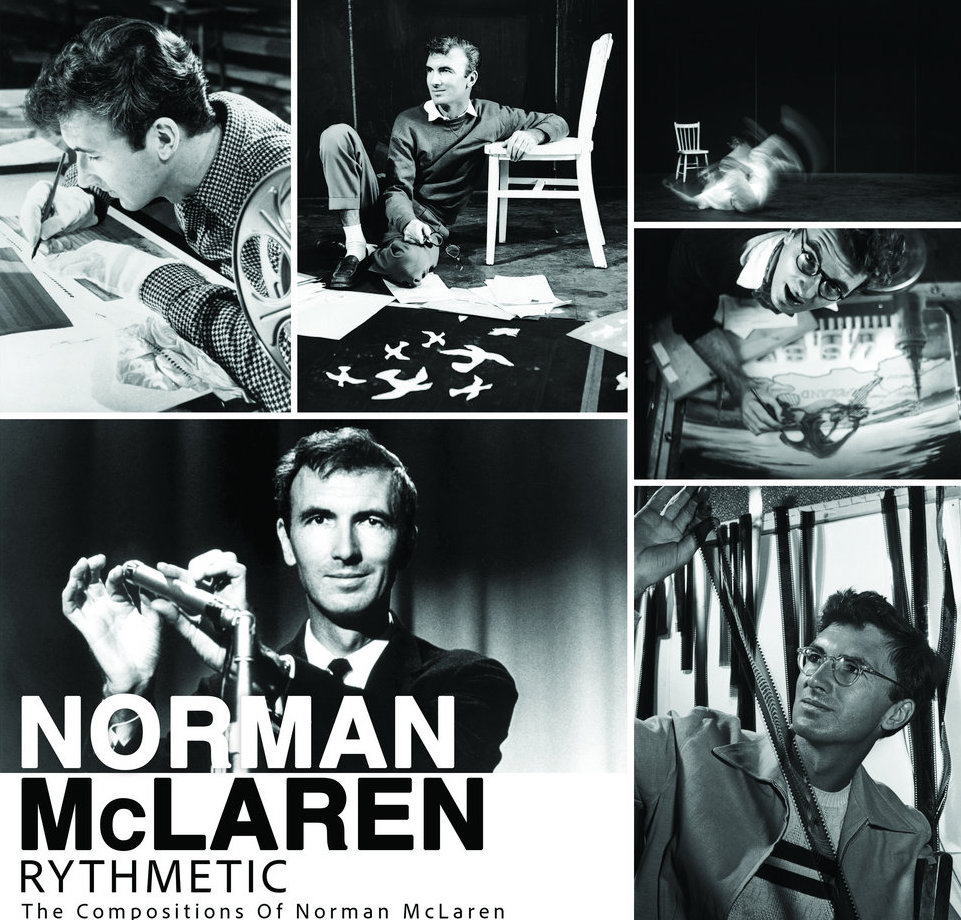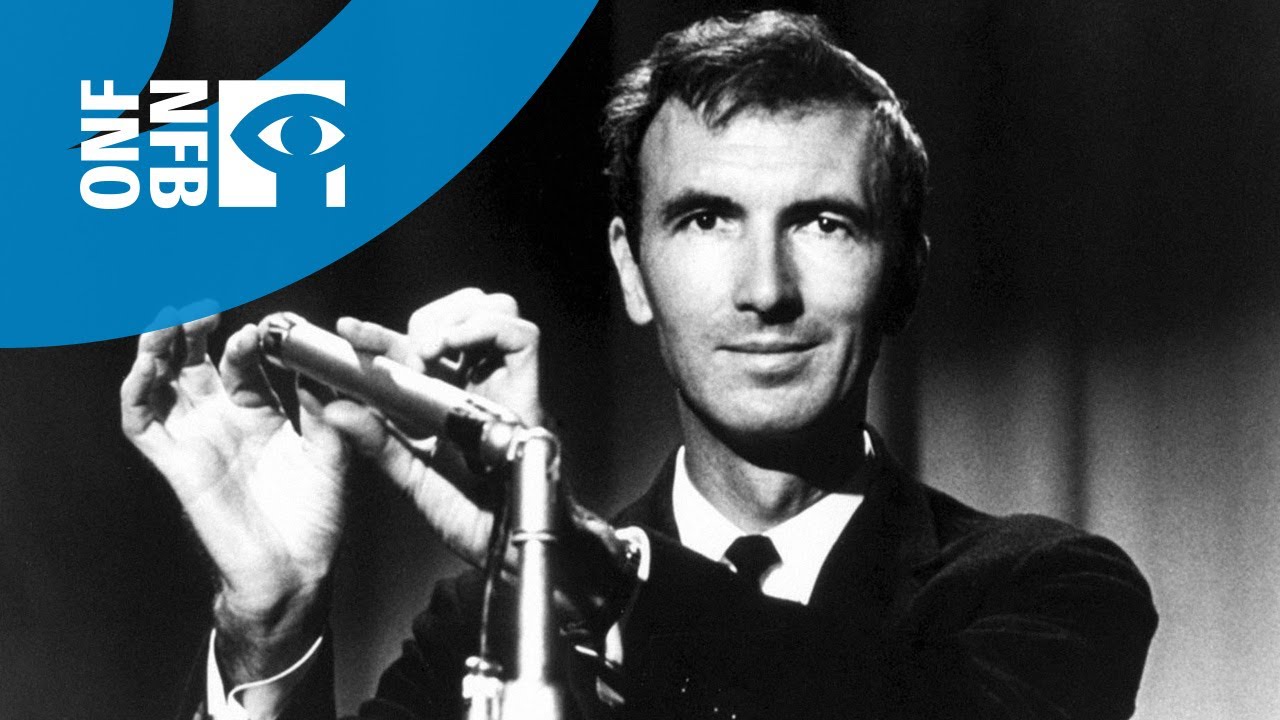“Rhythmic invention combined for our pleasure with the talent of an infallible juggler of timbres” wrote Le Figaro’s Robert Brussel in 1930, reviewing the premiere of Jacques Ibert’s suite for chamber orchestra, Divertissement. It is a bamboozling, haphazard composition assembled from incidental music Ibert composed for a stage comedy by Eugene Labiche. Fragments of funeral processions jostle with quotations from Mendelssohn’s ‘Wedding March’ and on into broken waltzes. A farce rendered audible; its zany antics are reinforced by a chamber orchestra’s ornateness being stretched to such cartoonish extremes.
Eight years later, a recording of ‘Divertissement’ was used to soundtrack Love On The Wing, an animated publicity film for Empire Air Mail, a predecessor to Airmail tasked with flying first class post across the British Empire. That short film was made by Norman McLaren, a 24-year old, Scottish-born animator who, having already won several prizes for his films, was employed at the General Post Office (GPO) Film Unit in London.
Love On The Wing’s backdrop evokes a montage of surrealist paintings. In the foreground, hyperactive envelopes, which McLaren had drawn using ink directly on to 35mm animated film, morph into people, walking eyes and pipes that stride fervidly across the screen. The dance of animated figures is perfectly at one with Ibert’s music. If the latter juggled timbres, McLaren juggled colours and shapes. He also exceeded his remit. Restricting the film’s distribution, the Postmaster General labelled it “too erotic” and “too Freudian”.
Nevertheless, Love On The Wing is archived and it remains a potent insight into an animator whose films often evoke an unsettled tempo pulsing through the mundane. Born in Stirling, Scotland, McLaren started making films when studying at the Glasgow School Of Art. After his stint at the GPO, he relocated to Canada and worked for the country’s nascent National Film Board. He was acknowledged as a pioneering animator in his day, winning an Oscar and a Palme d’Or. Pablo Picasso and George Lucas were fans, the former describing McLaren’s work as “something new in the art of drawing”.
Even now, McLaren’s films often carry an edge, reaching to something beyond light entertainment. Central to many of them is a symbiotic connection between sound and image. It’s there in the wonderful synchrony on Love On The Wing. It hits with dazzling effect on 1949’s Begone Dull Care, an animated accompaniment to the Oscar Peterson Jazz Trio. Abstract shapes, light and colour flash, erupt and jive to the music in a way which goes beyond soundtrack and emulates extreme synaesthesia.
McLaren didn’t always use other people’s music to score his films however, as documented on Rythmetic: The Compositions Of Norman McLaren, the first collection of McLaren’s audio work. Spanning 1940 to 1970, the compilation pulls together eight of his film scores, four unreleased compositions, and, intriguingly, the entire audio for his 1961 film Opening Speech. Most of the tracks capture a process dubbed ‘hand-drawn sound’. Just as his movies often involved him drawing on film, McLaren’s sound works involved him drawing shapes and patterns.
As the detailed liner notes for the compilation explain, after noticing the glue on spliced film reels produced a sound as it passed through a projector, he began measuring and collating the frequencies and tones different cuts and notches would produce. Over the years, he created a series of cards containing symbols and patterns corresponding to eight octaves of notes, which he then deployed in his sonic compositions. Often, both animation and soundtrack would be hand drawn side by side on the same reel of film.
The music collected on Rythmetic is simultaneously bizarre and oddly familiar in its moves between abstract bleeps and squelches into more euphonious tones and quotations from the classical music archive. In some ways you could place it on a continuum hurtling towards contemporary experimental and electronic music. In other ways, it’s a complete outlier, an artefact of a unique artistic vision combining with specific technical and aesthetic convergence.
Listening to the four previously unreleased tracks on Rythmetic, the pieces which don’t have an animated counterpart, the full scope of what McLaren conjured through unlikely means becomes apparent. Voluble, babbling shimmers coalesce into melodic motifs. Staccato rumbles and bubbles provide abrupt punctuation. Sometimes his music evokes a brass band submerged under water, at others it scurries through theatrical rises and falls. It doesn’t sound like either Oscar Peterson or Jacques Ibert, but through his hand-drawn sounds McLaren conjured a sense of high-spirited drama and free-wheeling energy reminiscent of both. An insight, perhaps, into why he chose to work with their music in his films.
A similar rhythm between pointillist and flowing, manic and elegant also weaves through the soundtracks included here. ‘Now Is The Time’ opens with a cascade of tones which sound uncannily like a synthesized piano. As the composition progresses, their pace starts to fluctuate as greater harmonic and melodic movement enter. ‘Dots’ is, well, dotty. Wobbly arpeggios neatly segueing into jagged intrusions of parping, sharp-edged tones. ‘Loops’ scurries and winds before tripping into rasping, throaty, brassy timbres.
Sometimes, something does seem to be missing when the hand-drawn soundtracks are isolated. The absence of visuals is a reminder of how integral sound and image were to each other in McLaren’s films. That’s brought home most directly by the compilation’s third track, ‘Neighbours’, originally created for the 1952 film of the same name which won McLaren an Oscar. The short film sees two neighbours get into hyperreal fisticuffs after one erects a fence to claim a flower that has sprouted between their houses. What starts as a farcical punch up descends into disturbingly violent scenes. An overblown conflict which leads to mutual destruction, Neighbours is a scathing lament of war’s violent futility, likely taking aim at the absurdity of the Cold War that was simmering away when the film was released. Left with the sound alone, that uncompromising critique is lost.
Meanwhile, ‘Opening Speech’ as a pure audio sounds recalls a fusion of sound-poetry stutters and foley sound. Like ‘Neighbours’, it’s fascinating on its own. But we also miss McLaren’s wrestle with an animate microphone, an absurd battle between recalcitrant technology and humanity which makes the film oddly poignant.
Which is to say, while Rythmetic is a comprehensive collection of McLaren’s audio work, a lot of this material was designed as a holistic merging of sound and vision. But it’s not simply a limitation. While some things are lost, just as much is gained through the magnifying glass Rythmetic shines on McLaren as a brilliantly unique composer. A facet to his work which until now has often been hidden in plain sight in his films is given the attention it truly deserves.
More than anything, the playful antics and often borderline manic energy of McLaren’s work feels tied to the times he lived through. McLaren passed away in 1987. Over the course of his life the world simultaneously got vaster and faster. Radio and television went from rarefied innovations to household devices. Letters grew wings and flew across oceans en masse. Two World Wars and one Cold War took place. Coinciding with it all was information and data being assembled in ever greater quantities and transmitted at ever faster rates. McLaren was embroiled in it all, whether through his work for the GPO or in his migration from Scotland to Canada via London.
We can see an echo of this in the film which gives Rythmetic its name, whose soundtrack is the second piece on the compilation. The title is a portmanteau of rhythm and arithmetic. The film is one of McLaren’s simplest, and most spectacular. Numbers and equations fill the screen, accumulating, fluctuating and dancing to bouncy, unstable pulses. In Rythmetic the fundamental mathematics that underpin the world start moving in new ways. The film, and its soundtrack, are equal parts elegant and frantic. McLaren had a fixation on rhythm that went beyond music. As he said of his approach to animation: “How it moved is more important than what moved.” His work seems marked by an engagement with a reality that was speeding up, and all the dazzling possibilities and potential farces that offered. His films seem equally awed by progress and aware of the surrealness and absurdity it injects into daily life. His work betrays a meticulous attention to detail and a playfulness with the tempo of the mundane. These are the characteristics which continue to make his films so engaging beyond their technical innovations. They’re qualities that can be heard throughout Rythmetic.
Rythmetic: The Compositions Of Norman McLaren is out now, and is co-released by Phantom Limb and We Are Busy Bodies



